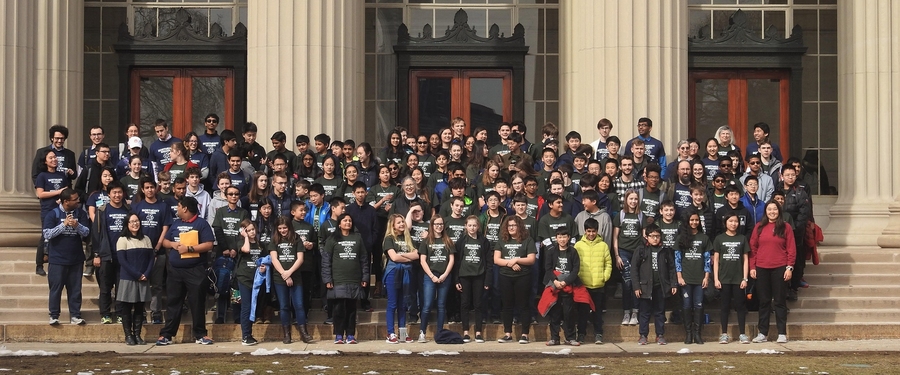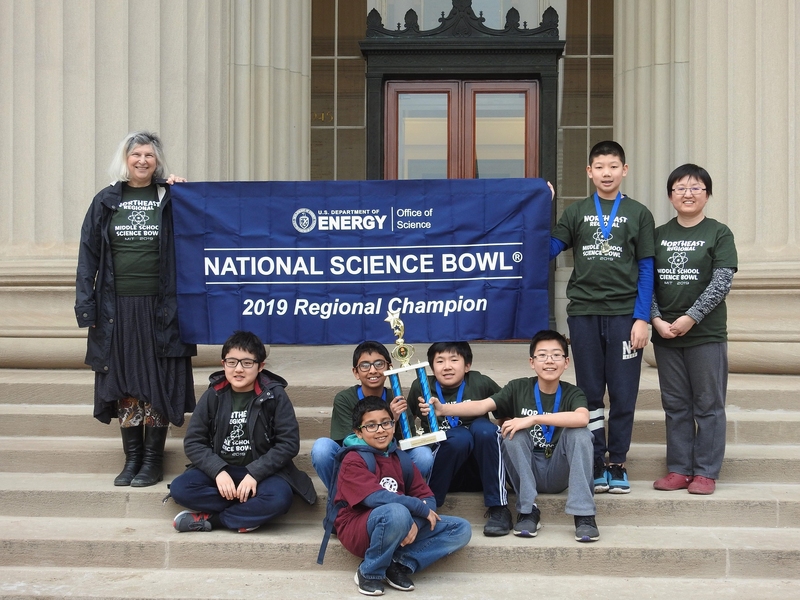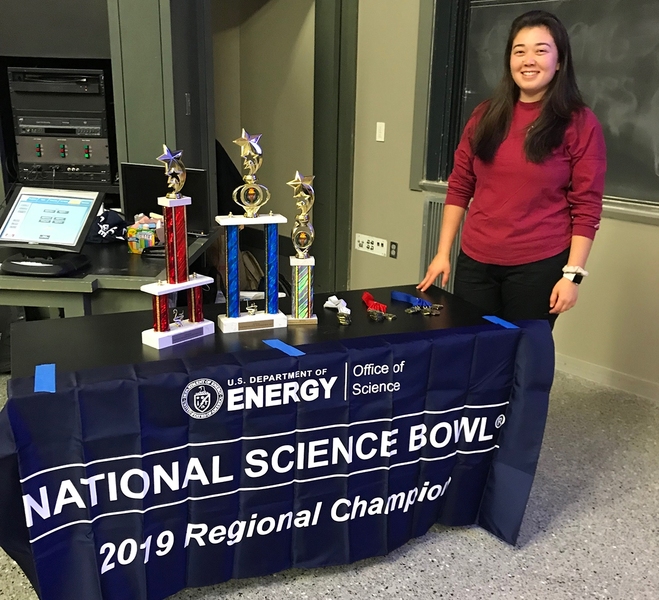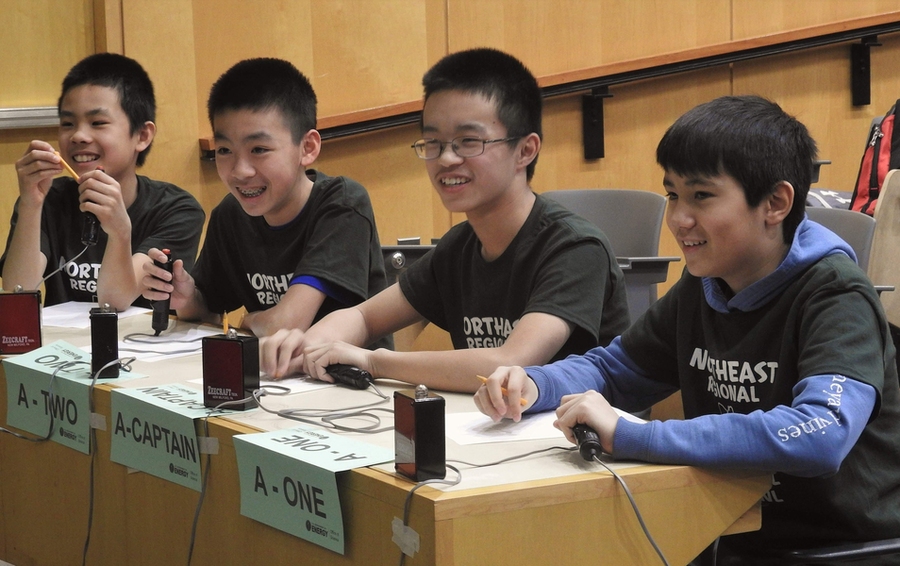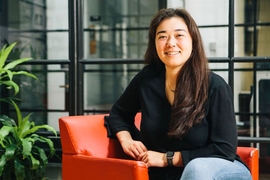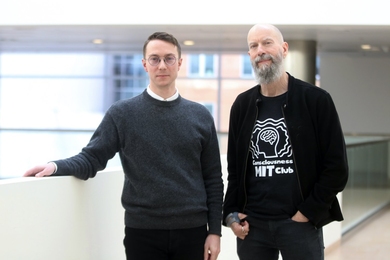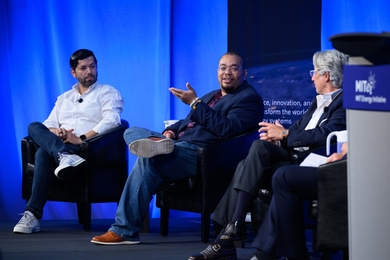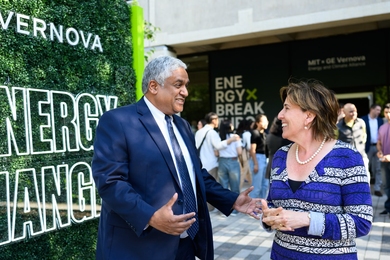On Saturday, Feb. 23, more than 100 middle school students gathered at MIT to compete in the annual Northeast Regional Middle School Science Bowl.
The event, now in its fourth year, was coordinated and executed by Kathleen Schwind, a senior in the five-year program in the MIT Department of Urban Studies and Planning, and Songela Chen, a senior in the MIT Department of Chemistry. Many of the organizers and volunteers, including Schwind and Chen, are veterans of middle and high school National Science Bowl (NSB) competitions.
“The Northeast Middle School Science Bowl really is something special,” says Schwind. “[It’s] an event run by young people for young people, and an opportunity to not only celebrate the youth in our community, but also inspire them to continue being a part of NSB and to give back to other young people one day, too.”
The first several rounds were a round-robin style warmup for the 21 teams of four or five middle school students representing 10 schools from Maine, New Hampshire, and Massachusetts. Correctly answered questions in fields such as life science, physical science, earth and space science, and math won a team points and the chance at a bonus question. An incorrect answer passed the question over to the other team, who could then attempt an answer.
After a lunch break and group photo, elimination rounds began. Those knocked out switched their attention to fun engineering challenges such as building a tower out of supplied paper bags, aluminum foil, cups, and straws. At the end of the day, eliminated participants watched the tight race for third place, followed by a championship round for the title.
This year, that title went to Jonas Clarke Middle School Team One from Lexington, Massachusetts. William Diamond Middle School Team One, also from Lexington, took second. The winning team received a coveted trophy and the opportunity to represent the Northeast in the National Science Bowl hosted by the U.S. Department of Energy in Washington in April.
However, the competition was not about winning, said several participants, all of whom wore matching green shirts stating, “Keep calm and science bowl on.” Instead, it was about the fun and comradery of being part of a team. “It gives you purpose,” said a seventh-grade student from William Diamond Middle School. Being on MIT's campus was an opportunity to interact with an even larger scientific community. “It’s fun and confusing and kind of scary,” said an eighth grader from Jonas Clarke, who wants to be a marine biologist. “Scary because of the number of people and how big MIT is,” she clarified with a laugh.
As a student at MIT, Schwind founded the Northeast Regional Middle School Science Bowl when she learned the region lacked a local chapter. She used experience gained from founding and coordinating such events since age 16 — the youngest coordinator to date.
“The science bowl is extremely valuable for promoting science and the broader appreciation of science, so I am delighted to continue my support through MIT’s School of Science for this year’s event,” School of Science Dean Michael Sipser says of his recurring interest in sponsorship of the event.
Schwind also recruited the help of fellow National Science Bowl alumni, such as Chen. Although both will graduate in the spring, Schwind and Chen plan to continue running this event next year, remotely if necessary.
As a seven-year alumna of middle and high school science bowls, Chen says it was a motivator for her career in science and she hopes to pay it forward, “to show middle school students how valuable and rewarding science can be.”
“There is nothing like seeing a competitor have that sparkle in their eyes after the event and tell you that they now want to be a scientist or mathematician and go to MIT one day,” Schwind says.
